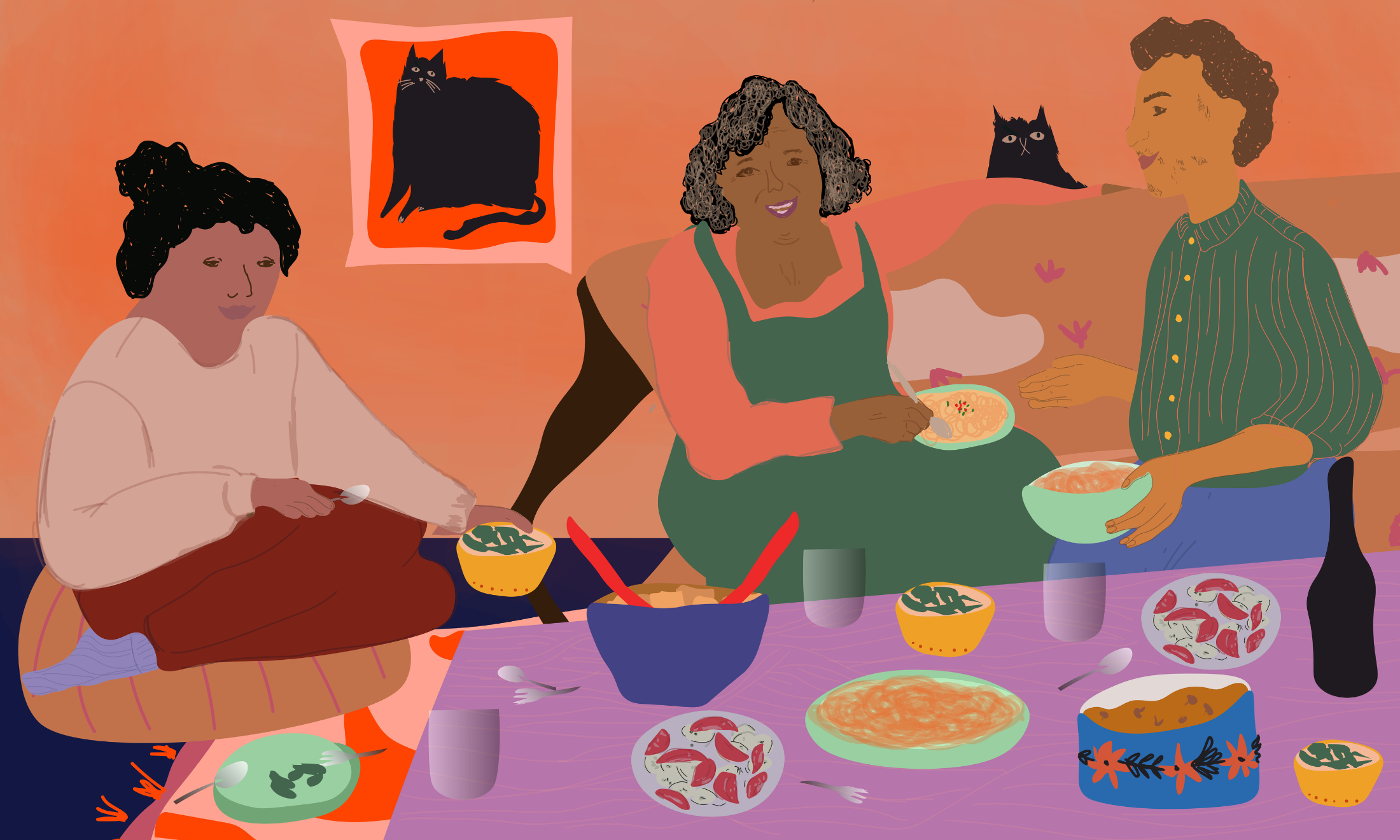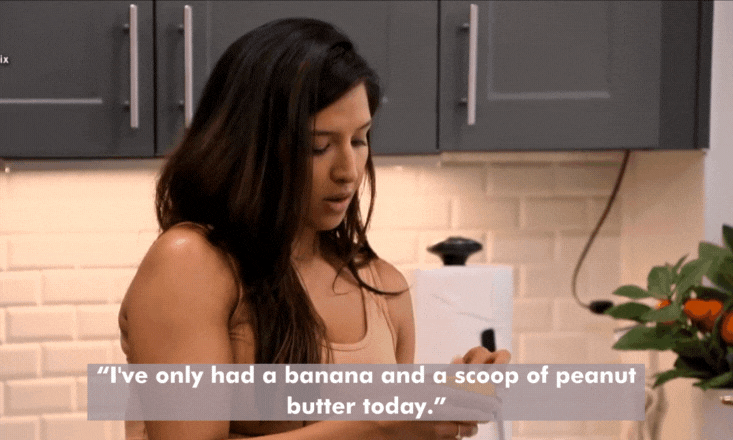
Soofiya
From postcards to sexts: my love letter to long-distance longing across generations
In a dusty box I discovered my parents’ old love letters, and rediscovered the vitality of long-distance relationships in an increasingly digital world.
Akshata Kapoor
26 Sep 2022
Dear,
How are you? You would be really cursing me. Actually, I won’t be coming to Bombay. Yaar, my boss had requested me not to take leave. Please try to understand my situation…
These words struck me as strangely familiar as I rummaged through a dusty box filled with letters sent from my dad to my mum in the 1980s, when they were in a long-distance relationship across two cities in India. I had just found out that I would be missing my long-distance boyfriend by two days – I was due to fly back to university just before his last exam of the year ended and allowed him to come back home to Bombay. Ugh this sucks, I had texted him.
Straight out of university, my mum began working in Bombay and my dad in Delhi. Juggling long work hours, tutoring gigs and familial restrictions, they somehow managed to write to each other nearly every week for two years. My dad’s letters are written with the precision and illegible scrawl of a doctor’s prescription: one date line, two ‘hello’s, three ‘sorry for not writing’s and one ‘luv’ before signing off. My mum’s are more chaotic: love-filled, youthful ramblings that fervently don a melodramatic cape as she turns the piece of paper into a re-enactment of her life.
Toast and chai balanced precariously in one hand, scoffed down before his ten-hour work days, my dad must have sat every morning enveloped in midwinter Delhi’s fog, mouthing the word, “Yaar” as though it would conjure up the warmth of my mum’s companionship. On the receiving end of the letters that swept her off her feet, my mum must have embraced each one for the border-crossing, mundanity-defying tryst it represented, before they eventually floated into dusty boxes to be stored for years, untouched and fading away.
I’ve stopped going for morning walks and I wake up at 7am. My dad writes so that his day can unfold for my mum as she tears open the envelope, ripping the edge of the letter in the process. I text my boyfriend on the way to lectures. Running late, couldn’t go to gym. Will call at night.
My parents’ letters transformed their long-distance relationship into a world of star-crossed lovers. My mum always tells me that for her generation, long-distance did not feel like a big deal, and was often a necessary compromise, a natural step in a relatively predictable future plan. Even my grandfather would spend months at a stretch away from my grandmother when work demanded it. Nowadays, however, instead of dependability, long-distance evokes tedium and frustration, especially in the last few years of enforced lockdowns.
“As much as technology is invaluable to long-distance relationships, it is never not strange that my love life has a category on the App Store.”
Despite being based on the same fundamental values as any relationship, long distance is considered to be settling for less – I can tell by the pitying looks on my friends’ faces as I try to reassure them that it’s really not bad at all. Texting and sexting are touted as hot alternatives to physical and emotional intimacy. But when everything else in our lives, from work to friendships, is communicated at a distance through pixels, it feels disingenuous to believe there is an adequate alternative to physical proximity when it comes to romantic relationships. For each FaceTime call that brings a smile to my face, the ping of Microsoft Teams sends me running back into bed. As much as technology is invaluable to long-distance relationships, it is never not strange that my love life has a category on the App Store. Apps designed for those in long-distance relationships, like Locket and BeReal, have their charm. But I don’t want my relationship to be mediated through an app.
Younger generations are having to consider the implications of being in long-distance relationships, as we’re pulled in different directions by forces that are outside our control, from rising housing prices, to the ever-competitive job market, to imminent disasters like the climate crisis. We’re increasingly needing to consider socio-economic factors that are external to the more obvious physical and emotional needs of a relationship. More of us are having to ask ourselves: is my relationship worth it? Is long-distance with no end in sight worth it?
“With one gust, your future can be blown away into an entirely different five-year plan that does not take place in the same city as your partner.”
In an ever-connected world, we are moving constantly, like birds in migration who, without flocks to stick to, are unsure where the next nesting spot will be. It’s natural to feel frustrated that even relationships, when placed in different timezones, become just another uncontrollable part of our lives, shaped by factors like distance, work and money. With one gust, your future can be blown away into an entirely different five-year plan that does not take place in the same city as your partner.
Although many couples living in the same cities were physically forced apart during Covid-19 lockdowns, this phase didn’t normalise or de-stigmatise the inevitability of long-distance relationships. Instead, lockdown-inspired fads to stay connected with partners and friends, like cooking together online or watching movies in parallel, made long-distance seem painfully underwhelming, as feigning normality enacted in a zoom box. Long-distance is unique: yes, it’s scheduled zoom calls, but it’s also unplanned moments of joy pouring out from a screen amidst the regular comfort and routine of a relationship. It’s a timeline of remembered dates, random updates and missed occasions, a scrapbook of “GUESS WHAT” texts and commute-length phone calls.
“Every top-right hand corner is an attempt to overcome the physical and temporal distance the letter will travel through.”
Discovering my parents’ letters was, for me, a glimpse into the papier-mache world of long-distance relationships as slippery and haphazard, but always growing, one piece of paper at a time. Their letters are timestamped: every top-right hand corner is an attempt to overcome the physical and temporal distance the letter will travel through. I find one marked 24 December, 1994. 7:30am. I am thinking of you right now. Nearly two decades later, I message my boyfriend before I go to sleep. The sent receipt marks the time: 2am. I miss you.
My parents’ letters are much more than just a necessary means of communication. They carry hope with them, sealed with Fevi stick and stamped with love. It can feel scary to forgo the physical shared space of romantic love when everything else in our lives – friends, work, hobbies – is also living on screens. But calls, emails and texts are also promises to the future.
“Are you having milk regularly or not?” writes my dad to my mother in a letter. Thirty years later, he now asks her this every morning when he wakes up. My boyfriend reminds me to hydrate through a cat meme that he knows will get my attention. We are always checking up on our partners and telling them that we love them, pouring out messy feelings for them to pick up and carefully unknot, even when the spool of thread stretches across borders. Long-distance may be the looming crisis of every modern love story but, as I flick through my parents’ letters, I can take refuge in the fact that our love languages persist: across years, frequencies and postal services.
Our groundbreaking journalism relies on the crucial support of a community of gal-dem members. We would not be able to continue to hold truth to power in this industry without them, and you can support us from £5 per month – less than a weekly coffee.
Our members get exclusive access to events, discounts from independent brands, newsletters from our editors, quarterly gifts, print magazines, and so much more!









